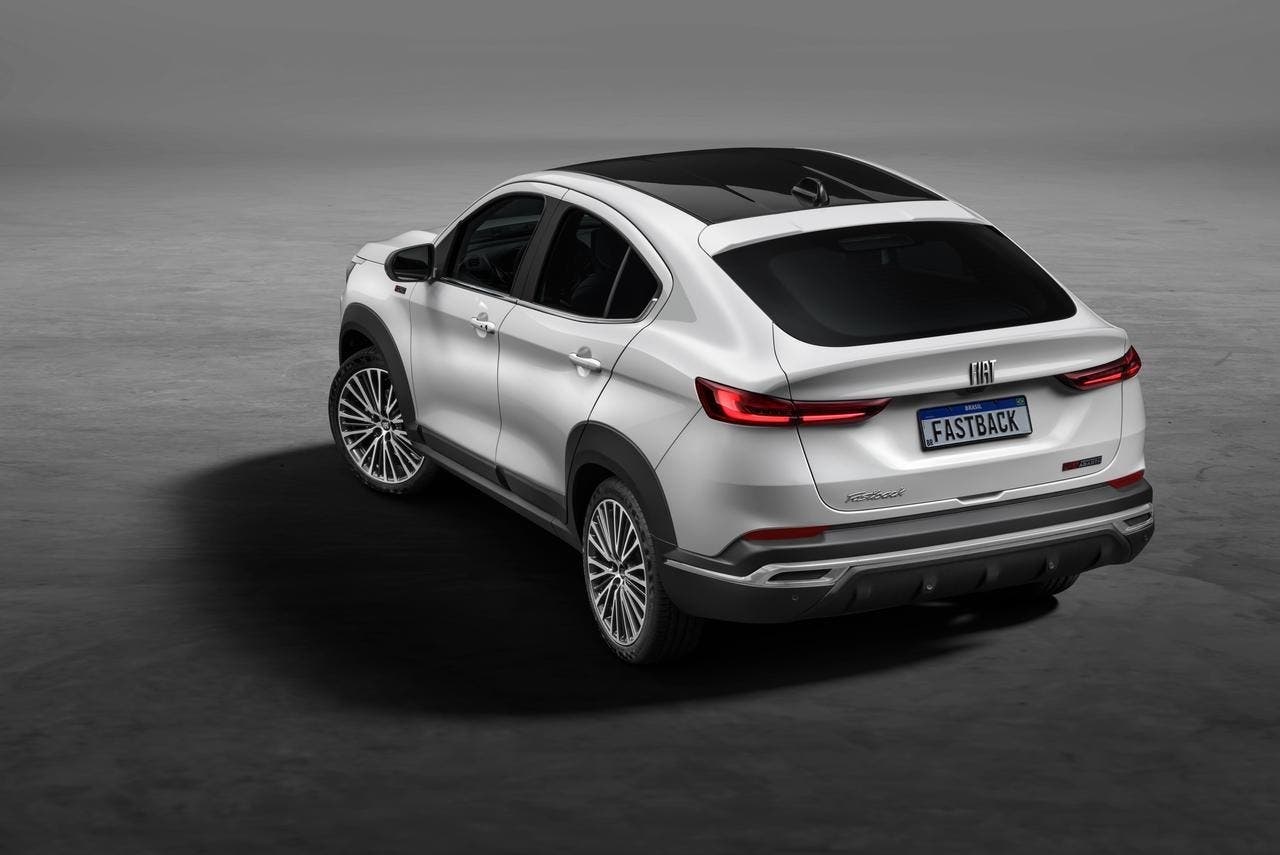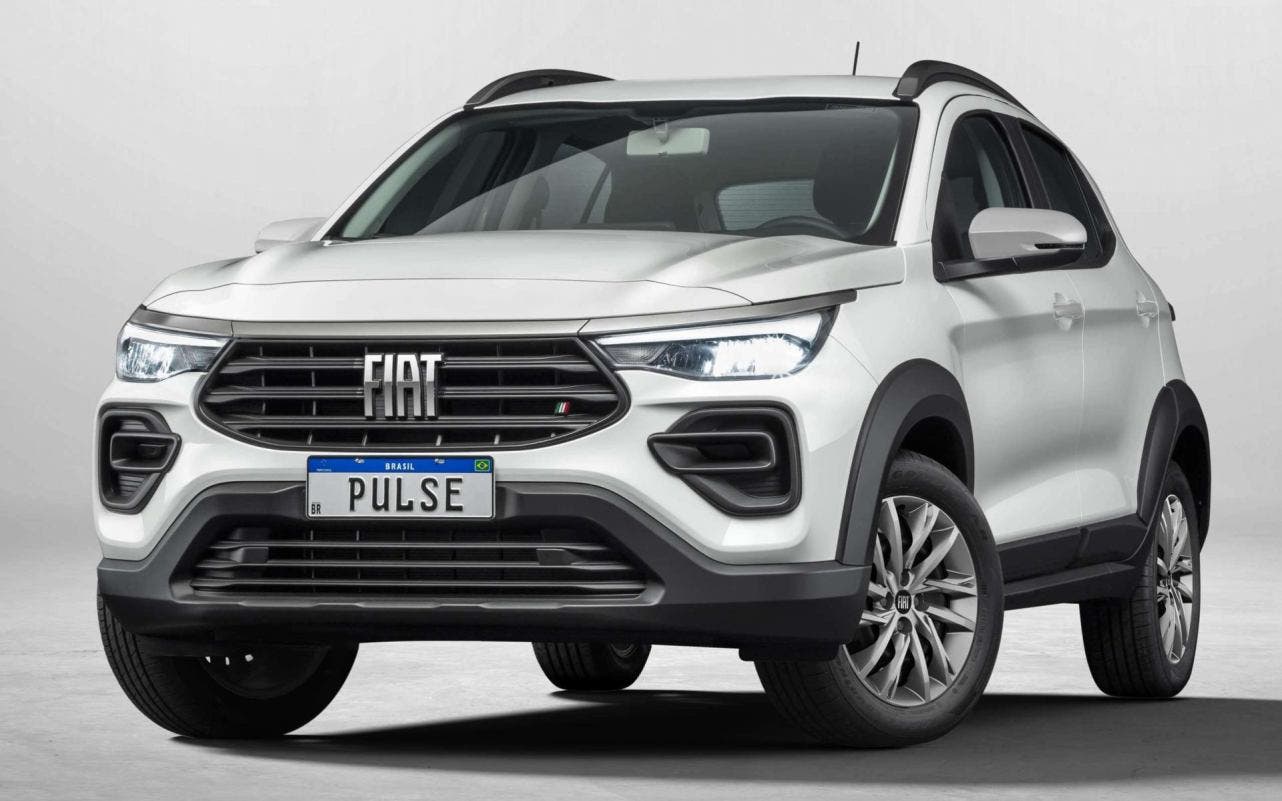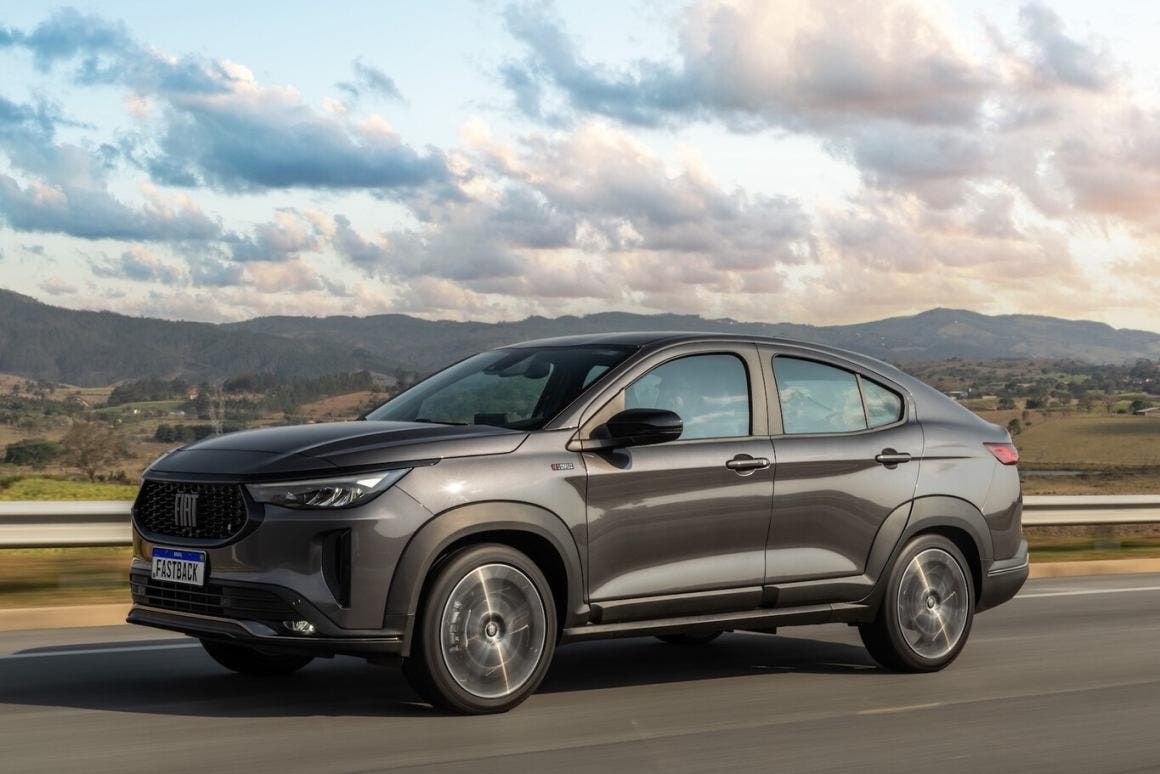Fiat Pulse and Fiat Fastback will be equipped with the 12-Volt Bio-Hybrid MHEV system, as announced in recent weeks. Their debut is expected this semester, and testing is currently underway at a rapid pace. Recently, spy photos of the Fastback prototype spotted in Brazil have circulated on the internet. The BSG system will be coupled with the Turbo Flex 200 engine with CVT transmission.
Testing continues on the hybrid version of Fiat Fastback, which will debut soon

The Bio-Hybrid (MHEV) system features a multifunctional electric device that replaces both the alternator and starter motor. This equipment can provide mechanical and electrical energy, generating additional torque for the vehicle’s combustion engine and electrical energy to charge an additional 12-volt lithium-ion battery, which operates in parallel with the vehicle’s conventional electrical system.
In Europe, the 12V system is used on the Fiat Panda with a 1.0 Firefly engine and six-speed manual transmission. This MHEV system, also known as BSG (Belt Starter Generator), is equipped with a 12-Volt high-voltage lithium-ion battery. To work together with the Turbo 200 Flex engine and CVT transmission, the system requires a new alternator and replacement of electrical cables. The BSG system is connected to the CVT transmission, and the MHEV system battery must be installed in the trunk or under the rear seat.
The 12V BSG technology offers power up to 3KW, improving the performance of the Fiat Pulse and Fastback Bio-Hybrid models, as well as reducing fuel consumption. This technology also helps reduce pollutant emissions, responding to the next phase of the Proconve L8 Program, which focuses on reducing non-methane organic gases (NMog) and nitrogen oxides (NOx). Therefore, brands will need to focus on reducing exhaust emissions.

Currently, the combustion engine takes about two minutes to warm up. Stellantis plans to use the hybrid system’s electric motor to heat the catalyst, allowing the vehicle to transition from the cold catalytic phase to gas catalysis without relying on the combustion engine to heat the catalyst.
No improvements in power and torque are expected. The Turbo 200 engine will continue to produce 130 HP with ethanol and 125 HP with gasoline, with a torque of 20.4 kgfm for both fuels. However, the Bio-Hybrid system can provide an additional gain in power and torque. The transmission will continue to be the CVT, which simulates seven gears. In the future, the system will also be used in the Turbo Flex 270 kit and the six-speed automatic transmission, but in this case, it will be 48 Volt.

